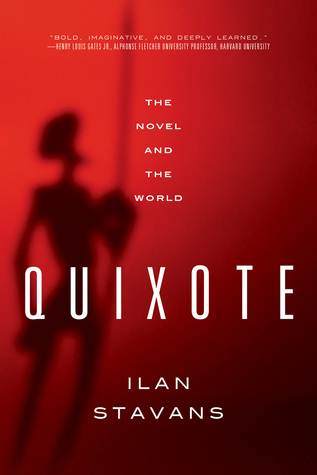
Quixote
The Novel and the World
کتاب های مرتبط
- اطلاعات
- نقد و بررسی
- دیدگاه کاربران
نقد و بررسی

May 4, 2015
Tracing four centuries of influence of what hispanophones affectionately call
“el Quijote,” Stavans (A Most Imperfect Union) takes an entertainingly idiosyncratic look at Don Quijote, the “novel of novels.” Offering more cultural history than literary criticism, Stavans begins with the novel as a product both of a man and
an age. He progressively broadens his scope to examine the wildly varied interpretations of it, including a “cornerstone of Western civilization,” a foundation of Spanish nationhood, and the novel that “begat modernity.” Stavans’s work has the tone of a conversational lecture, with room for occasional digressions and jokes, but
all the confident precision and clarity of a scholar working with material he knows and loves. Though an admirer, Stavans is no purist (or “Cervantisto”); he appreciates the variations wrought by numerous translations, including his own rendition of
one passage into Spanglish, as much as the evolving applications of Quijote as adjective (quixotic), ideology (quijotismo), and Japanese retail chain (Donki). In the process, he defines the nature of this literary classic and shows the many ways in which Don Quijote has “unquestionably shaped our culture,” not just of Spain but of the Americas. A combination of celebration, meditation, and quest, Stavans’s book is bound to please el Quijote’s devoted readers and win new fans. Illus.

June 15, 2015
Stavans (Lewis-Sebring Professor in Latin American and Latino Culture, Amherst Coll.; A Most Imperfect Union) writes about Miguel de Cervantes Saavedra's Don Quixote of La Mancha, originally published in two parts in 1605 and 1615. The result is a book of insights that could have been expanded into any number of larger studies but is ample as is and eminently readable. Stavans notes that we know little about Cervantes's looks and comments on the relationship of the Knight with other characters such as Sancho and Dulcinea. Later, the author muses on the absence of a bona fide antagonist in the novel, critiques Cervantes's baroque writing as rambling and flat at times, evaluates the words and punctuation (noting that Cervantes only uses 22,939 different words compared to Shakespeare's 29,066), and compares Don Quixote with successors, from Franz Kafka's Gregor Samsa (The Metamorphosis) to Mark Twain's Huck and Jim on the river (The Adventures of Huckleberry Finn). Stavans's closing chapter on translations ends with a translation of his own: a passage by Cervantes into Spanglish. The impression is of abundant intelligence poured into a vessel whose aim is not tidy scholarship but joyous insight. VERDICT Book lovers will relish this expansive and generous tome. [See Prepub Alert, 3/23/15.]--David Keymer, Modesto, CA
Copyright 2015 Library Journal, LLC Used with permission.

























دیدگاه کاربران